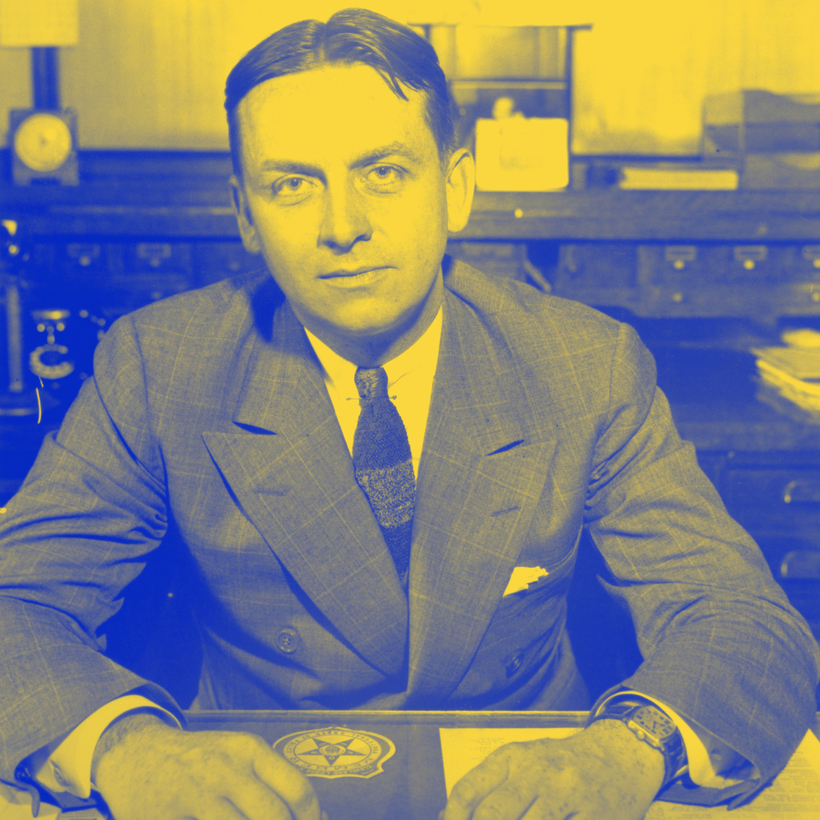One evening in September 1935 two boys playing softball in a run-down area of Cleveland, Ohio, found a young man’s corpse hidden in undergrowth. The body was naked except for a pair of black socks, and bore the marks of torture. Its genitals and head were missing. Decapitation seemed to be the cause of death.
Detectives were perplexed. They were used to seeing mutilated bodies. Yet as one noted, this was usually done “to prevent identification, but almost never to kill. It’s a hell of a job to remove a human head.”
Police later worked out that the dead man was Edward Andrassy, a small-time drug dealer, pornographer and pimp who worked shifts in Cleveland’s City Hospital. And his was not the only body they found that day. Dumped 30ft away was another male corpse, similarly abused. No one ever established who this second man was. But he and Andrassy would come to be known as victims of a serial killer known as the Cleveland Torso Murderer or the Mad Butcher of Kingsbury Run.
During the next three years ten more chopped-up cadavers appeared around the city, and the case became notorious across America and as far away as Nazi Germany. It embarrassed Cleveland’s police, who could do nothing to stop it. And it dogged the man in overall charge of the force: the fabled American crime-fighter Eliot Ness.
Scarface’s Sequel
Ness is one of the most famous names in the annals of American crime-fighting: he was the inspiration for Dick Tracy and the 1950s TV series The Untouchables. The latter was supposedly based on Ness’s exploits in Prohibition-era Chicago, when he helped to build a case against Al Capone’s mob. But it was almost entirely fictitious. So there is much in his life for historians to explore.
Max Allan Collins and A Brad Schwartz are Ness aficionados. Collins has written several novels and a one-man stage show featuring Ness; Schwartz, an academic, has been obsessed since childhood. They collaborated on a previous book, Scarface and the Untouchable, chronicling Ness’s clash with Capone. But when Capone went to jail, Ness was in his late twenties and barely halfway through his life. What, the authors ask, did he do next?
Well, in 1934 Ness moved to Cleveland, to shut down illegal alcohol distilleries. Within a year, however, he was made city safety director, overseeing the police and fire services. He was not a detective (still less an FBI agent). And he seldom carried a gun. Rather, he was a conscientious, stiff-necked stickler for standards in public life, an intellectual, a progressive and an ardent believer in institutional reform.
Ness believed that urban life would be safer and happier if young men were kept out of jail and encouraged to serve their communities. He hated bent police officers and placed his trust in “untouchable” types — like himself — who would not be bribed or bullied by criminals or politicians. He thought officers should be fit, sober and alert. He loved technology and pioneered the use of police cars fitted with two-way radios. He used journalists and ad campaigns to portray his policies in a favorable light.
Most of these were radical ideas in the 1930s, and not universally popular. But Ness took police professionalism seriously and saw it as a force for social change. “I want to prove what an honest police force with intelligence and civic pride can do,” he once said.
When Al Capone went to jail, Eliot Ness was in his late twenties. What did he do next?
Sadly, none of this high principle counted for much when there was a crazed killer on the loose. The detectives who worked the Mad Butcher case under Ness may have had car radios, but they did not have access to modern forensics or DNA testing. Moreover, Collins and Schwartz argue, Ness was a rationalist, who believed crime had logical solutions. “The idea of a murderer who killed solely for satisfaction made no sense to him.” When he did try to get progressive, it was a disaster.
Since the Butcher preyed on Cleveland’s shantytowns, Ness sent officers in to round up the “hoboes, transients and homeless” from the slums and set fire to their shacks. Needless to say, victim-blaming on this scale made for poor public policy.
For three years the Butcher went about his demented business. And he was never caught, although Cleveland police investigated thousands of suspects.
In 1939 an immigrant called Frank Dolezal was tortured by sheriffs outside Ness’s jurisdiction into confessing to one murder, and died, supposedly of suicide, in his cell.
The other prime suspect, Frank Sweeney, an alcoholic medic and army veteran related to a senior Cleveland politician, was committed to a mental asylum but never brought to justice. After Ness left his post in Cleveland in 1942 Sweeney wrote him cryptic postcards but stopped short of a confession.
When Ness died of a heart attack in 1957, after a post-police career of failed business ventures, heavy boozing and spiraling bad luck, the case remained unsolved.
In arranging this slab of Ness biography around the Butcher case, Collins and Schwarz are on slightly thin ice. Today many pious historians turn up their noses at murder narratives that focus on (or glorify) killers and cops, arguing that we should instead elevate the victims. Moreover, in using the salacious horror of the killings as a peg for what is really a much broader chronicle of Ness’s post-Chicago years, the authors give the Butcher somewhat more prominence in Ness’s life than he deserves.
All the same, this is a deeply researched book — the source notes run to more than 100 pages — which reads like a thriller and sheds new light on a poorly understood modern American icon. Crime history doesn’t get a lot better than that.
Dan Jones is a U.K.-based historian and journalist

